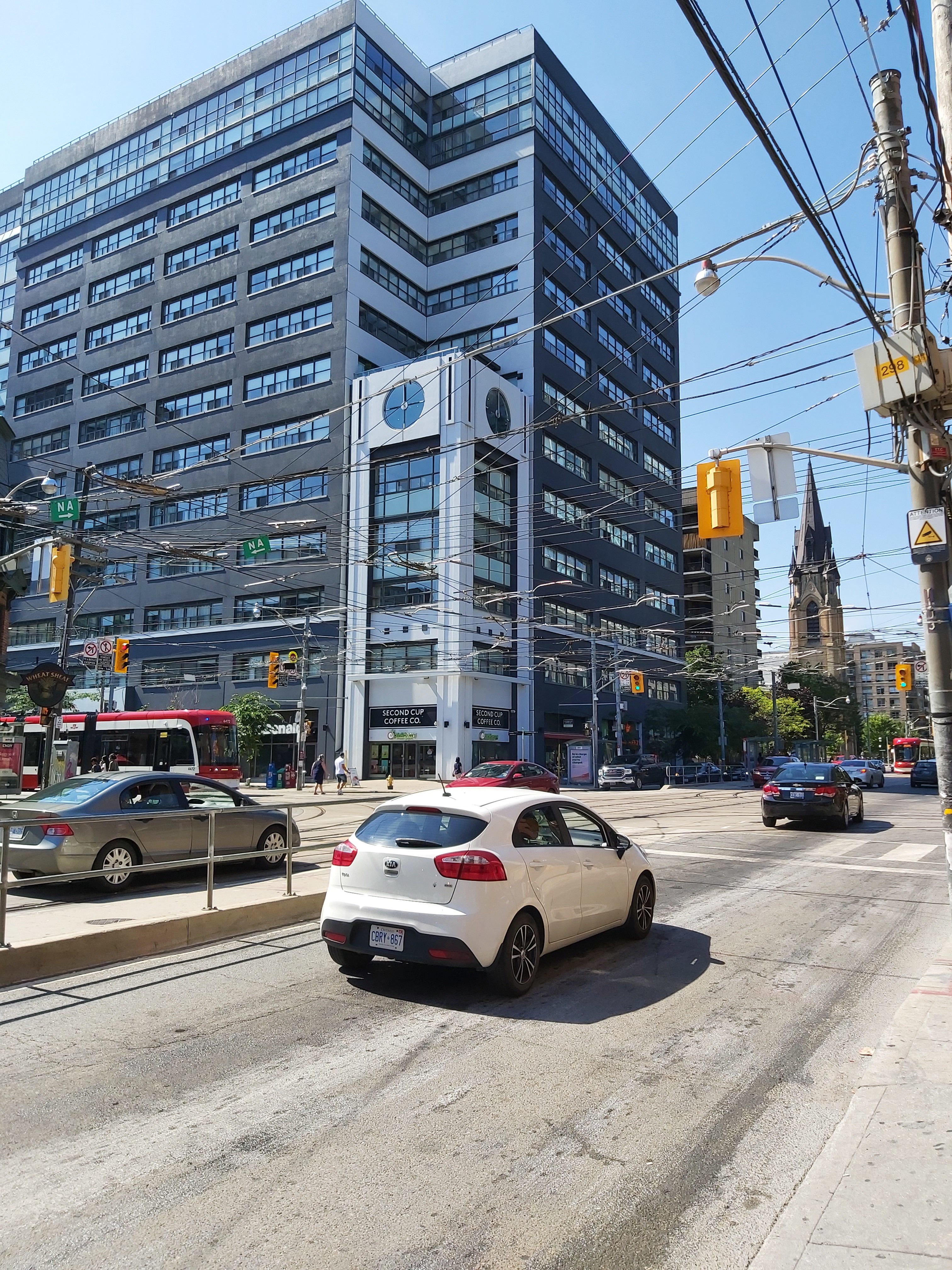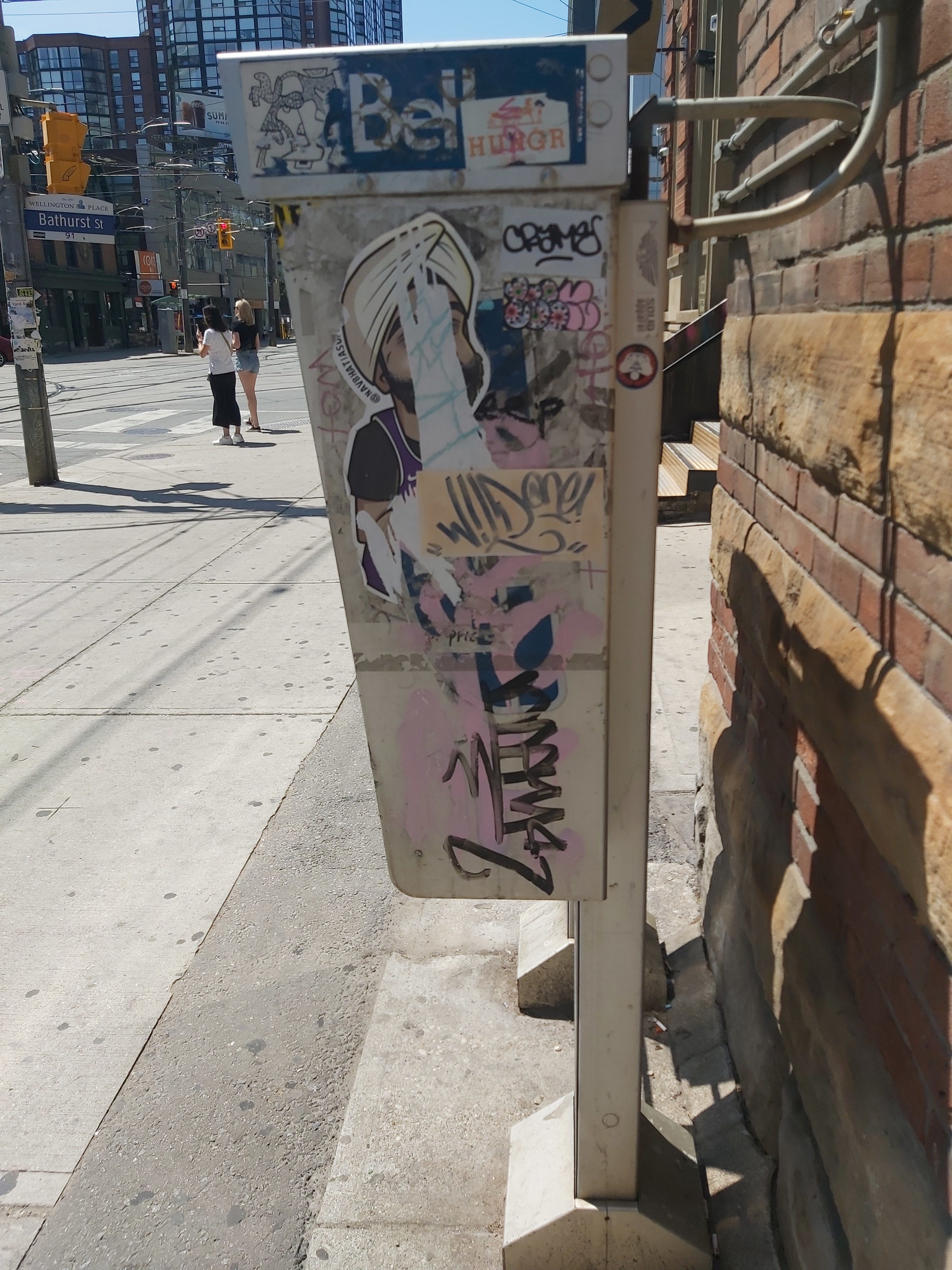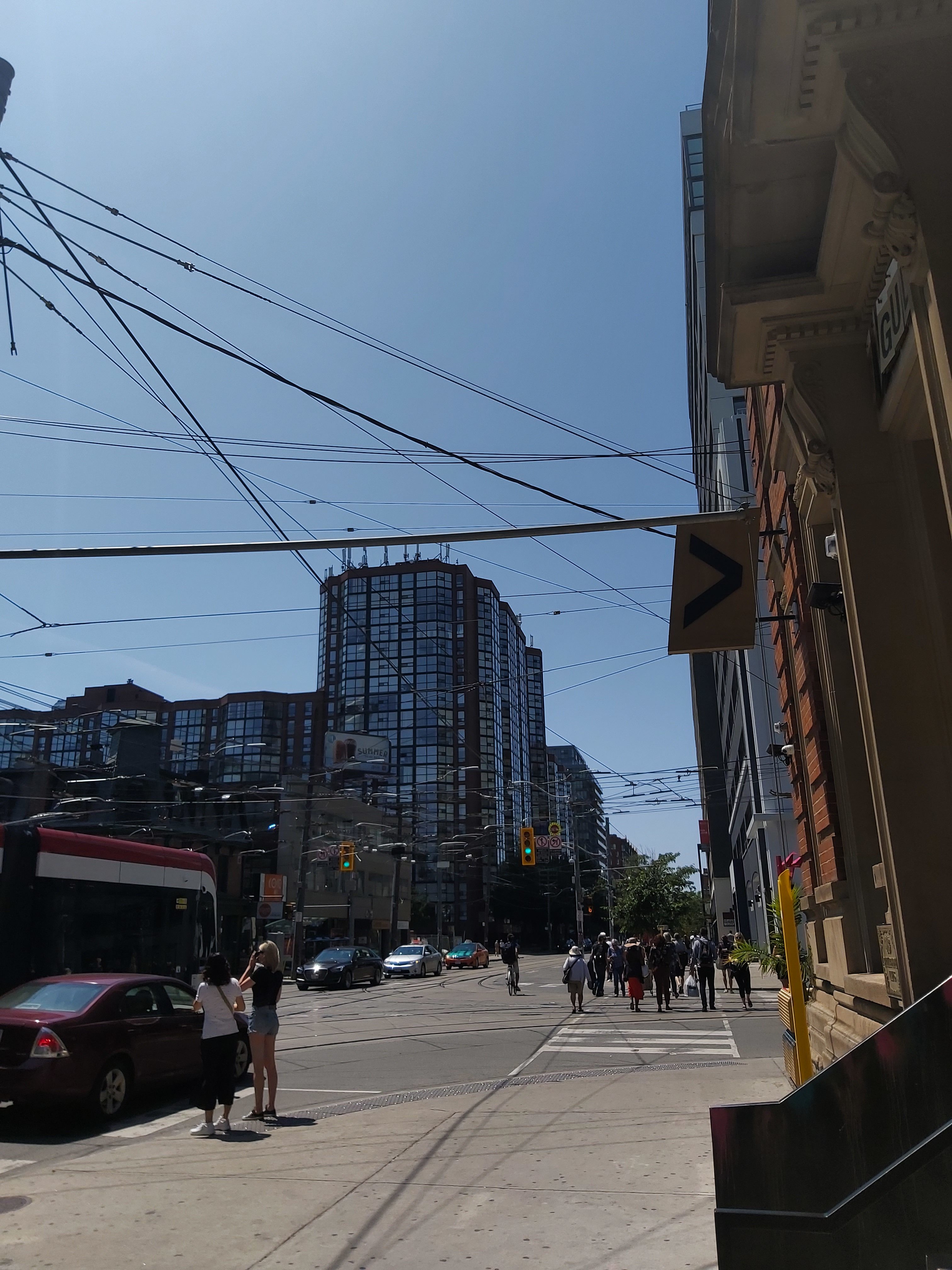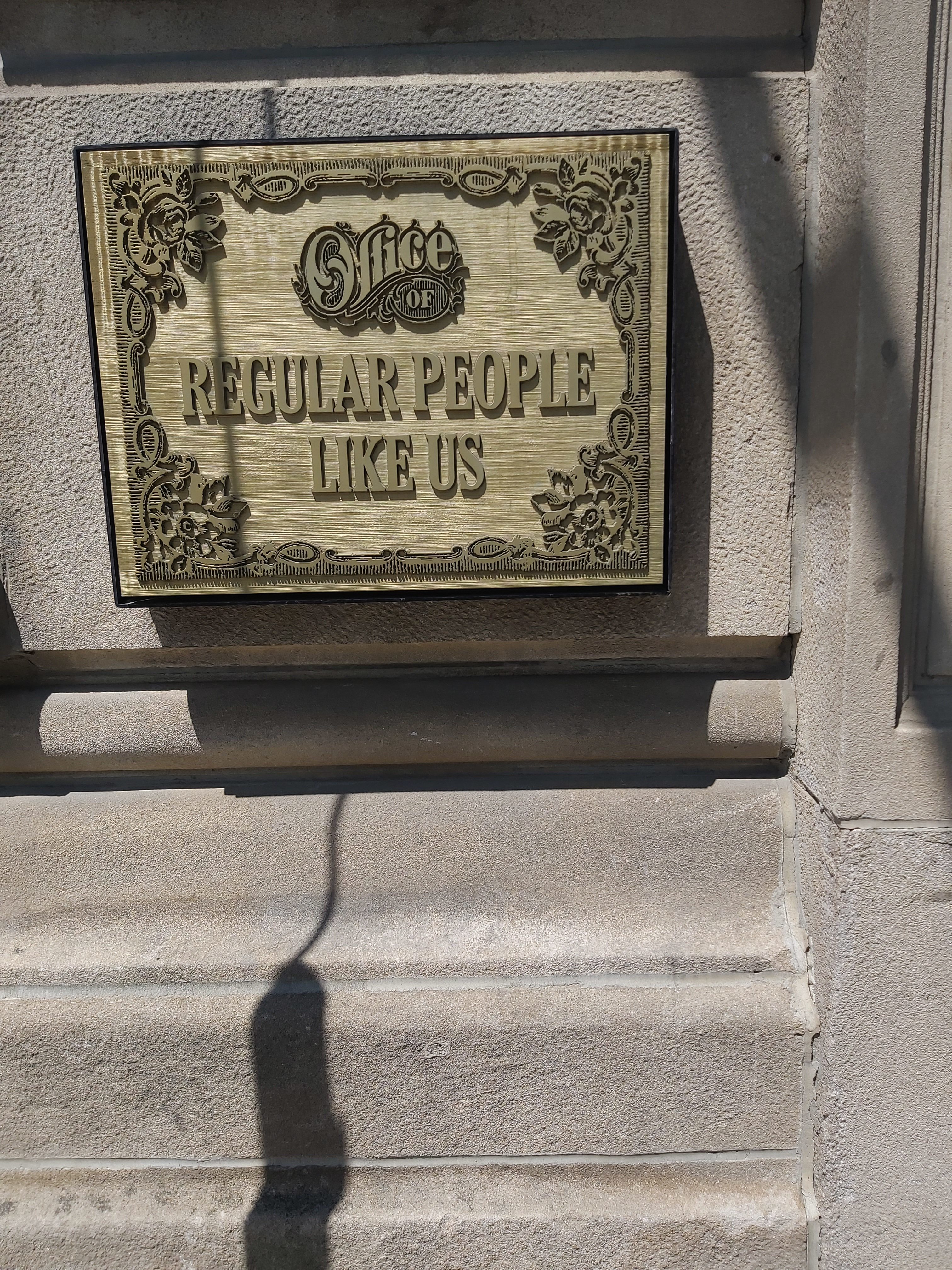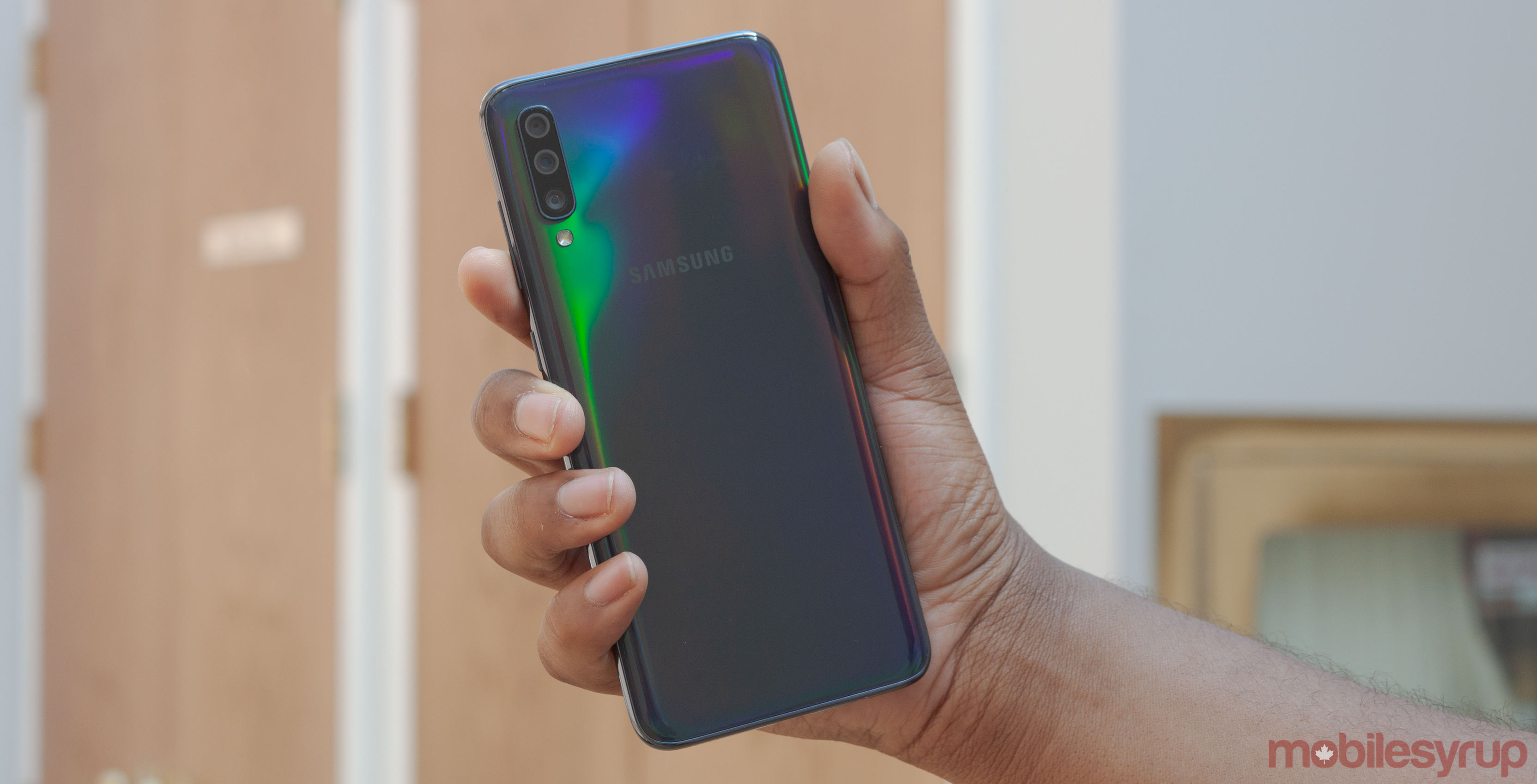
The Pros
- Long lasting battery
- Premium design
- Snappy experience
The Cons
- Lacklustre camera
- Lacks IP68 water/dust resistance
- Lacks stereo speakers
If you were to go on the street and ask people what they know about Samsung’s smartphones, most would say they’re aware of the company or at least know of its Note or S-series flagships.
However, the company recently launched a trio of mid-range smartphones: the Galaxy A70, A50 and A20. To my surprise, these mid-range devices are no slouches and worth considering if you’re looking for a mid-range handset. In particular, the Galaxy A70 that comes at a lower price with premium features that some flagship devices don’t even have.
Samsung’s mobile chief DJ Koh announced in 2018 that the A-series smartphones will get new, often experimental features before the company’s flagship models. Given that you’ll find all of the Galaxy A70’s features in the company’s flagship S10 or S10+, but at half the price.
In comparison to other solid mid-range smartphones like Google’s Pixel 3a series, Huawei’s P30 Lite and the Moto Z4, Samsung’s Galaxy A70 is a top contender.
Samsung Galaxy A70
Display
6.7-inch Super AMOLED, 2,400 x 1,080 pixels, 20:9 aspect ratio
Processor
Snapdragon 675
RAM
6GB of RAM
Storage
128GB, expandable via nano SD card
Dimensions (in.)
164.3 x 76.7 x 7.9mm
Weight
183g
Rear Facing Camera
32-megapixel (f/1.7, PDAF) + 8-megapixel (f/2.2, ultrawide) + 5-megapixel (f/2.2, depth)
Front Facing Camera
32-megapixel (f/2.0)
OS
Android 9 Pie
Battery
4,500mAh
Network Connectivity
GSM/HSPA/LTE
Sensors
Fingerprint (in-display), accelerometor, , gyro, proximity, compass
SIM Type
Nano SIM
Launch Date
June 7, 2019
Misc
Colours: Black
Display
Samsung Galaxy A70
6.7-inch Super AMOLED, 2,400 x 1,080 pixels, 20:9 aspect ratio
Processor
Samsung Galaxy A70
Snapdragon 675
RAM
Samsung Galaxy A70
6GB of RAM
Storage
Samsung Galaxy A70
128GB, expandable via nano SD card
Dimensions (in.)
Samsung Galaxy A70
164.3 x 76.7 x 7.9mm
Weight
Samsung Galaxy A70
183g
Rear Facing Camera
Samsung Galaxy A70
32-megapixel (f/1.7, PDAF) + 8-megapixel (f/2.2, ultrawide) + 5-megapixel (f/2.2, depth)
Front Facing Camera
Samsung Galaxy A70
32-megapixel (f/2.0)
OS
Samsung Galaxy A70
Android 9 Pie
Battery
Samsung Galaxy A70
4,500mAh
Network Connectivity
Samsung Galaxy A70
GSM/HSPA/LTE
Sensors
Samsung Galaxy A70
Fingerprint (in-display), accelerometor, , gyro, proximity, compass
SIM Type
Samsung Galaxy A70
Nano SIM
Launch Date
Samsung Galaxy A70
June 7, 2019
Misc
Samsung Galaxy A70
Colours: Black
Premium design, affordable price
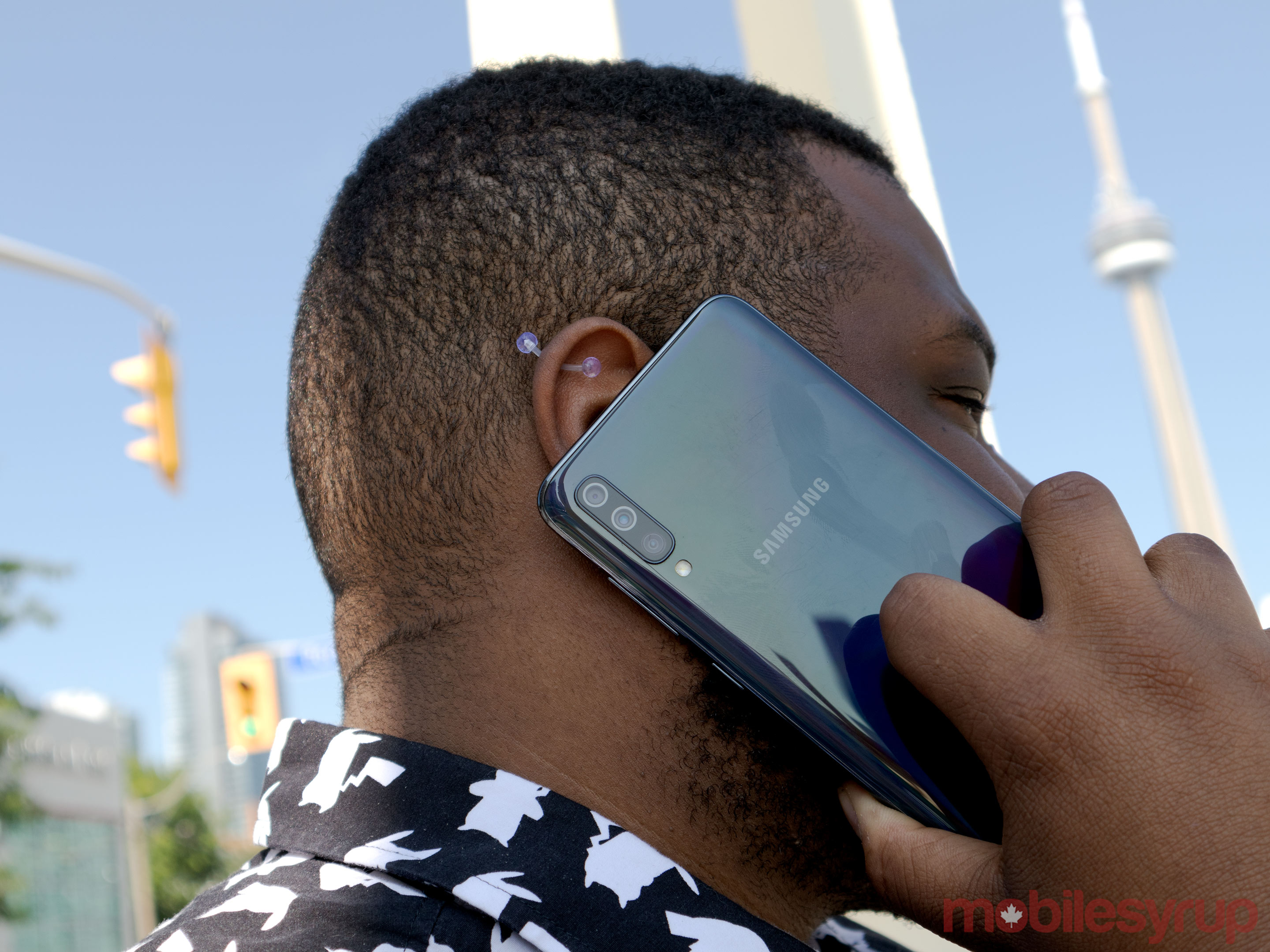
The Galaxy A70 features a glass back and front that makes it feel premium. In addition, the phone is quite light, weighing in at only 183g. Both the P30 Lite and Pixel 3a XL are lighter than Samsung’s mid-range competitor, however.
On the bottom, there’s the standard USB-C port as well as a downward-facing speaker and a headphone jack. On the left side, there’s a SIM card tray while the right features the volume rocker and power button. Notably, the phone doesn’t have a dedicated Bixby button. Bixby is Samsung’s digital voice assistant that works similarly to Siri and Google Assistant. A70 users can instead summon the voice-activated assistant with a ‘Hello Bixby’ keyphrase. This isn’t poor implementation, but many of Samsung’s smartphones feature a controversial button that allows users to activate it easily.
It’s unfortunate the phone only has a downward-facing speaker as sound sometimes sounds muffled when holding the device in landscape.
Further, the rear of the device includes a vertical triple camera setup with a dual-LED flash. On the front, it sports an ‘Infinity-U’ display, Samsung’s branding for displays that feature a U-shaped camera cutout, commonly known as the waterdrop notch. It looks similar to the one featured in the Huawei P30 Lite.
Instead of a physical fingerprint scanner, the A70 includes an in-display sensor. Unfortunately, the scanner is slow, especially in comparison to the ultrasonic fingerprint sensor featured in the Galaxy S10. Also, optical fingerprint sensors aren’t as secure as ultrasonic variants. For improved sign-in speed you can use the phone’s face-scanning technology. Unfortunately, it lacks depth-sensing tech, which means a picture can likely trick it.
That’s not to say that both features are unappreciated. Huawei’s P30 Lite lacks an in-display fingerprint scanner, and the Pixel 3a doesn’t feature facial recognition or an in-display fingerprint sensor. However, its physical fingerprint scanner is quicker than the A70’s in-display method. The Moto Z4 has both unlocking methods, and its fingerprint scanner is much quicker to the Galaxy A70’s.
As previously mentioned, DJ Koh said that Samsung is now implementing flagship features within its A-series smartphone, and an in-display fingerprint scanner is an example of this. While the optical scanner isn’t as quick as it could be, I appreciate it. And it allows users unfamiliar with the technology to try out a new way to unlock their handsets. Even LG’s G8 ThinQ lacks an in-display scanner, and that’s a flagship.
One of the best things about the A70 is while it only comes in a black variant when the phone perfectly reflects sunlight; it gives it almost a rainbow effect.
One of the biggest smartphone displays in Canada
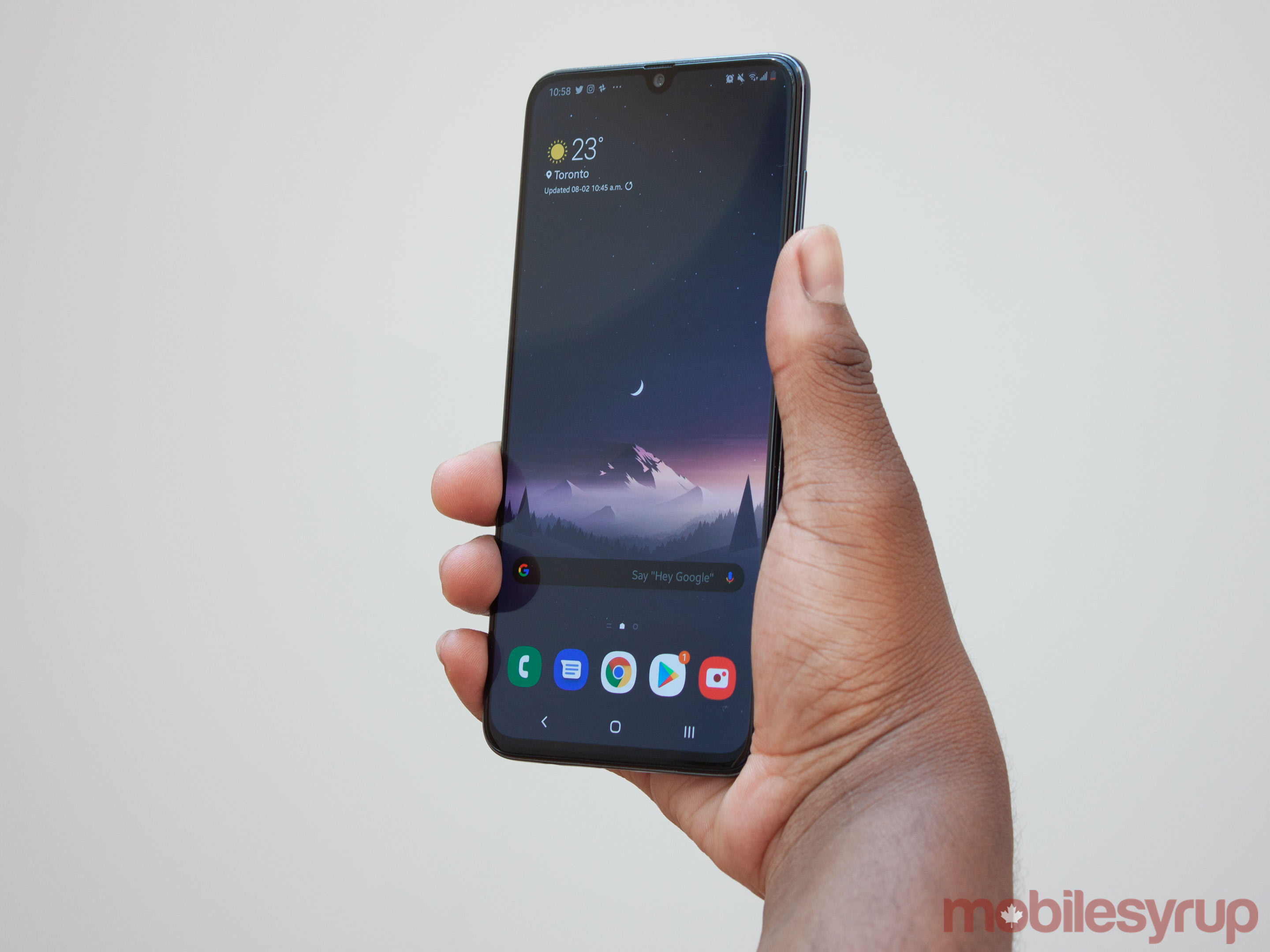
The Samsung Galaxy A70 features a 6.7-inch Super AMOLED screen with a 2,400 x 1,080pixel resolution. Further, the display sports a 393 pixel-per-inch density and a 20:9 aspect ratio.
Videos look decent, and there’s a wide range of colours that come across clear. The phone lacks HDR10+ and Dolby Vision, however.
While watching movies, the A70’s colours are a bit warm and don’t offer precise hues in certain scenes, such as when there’s a sunset. It’s also worth noting that the phone doesn’t feature a curved display like higher-end devices such as the S10, P30 Pro or OnePlus 7 Pro. This means that it does not offer an immersive experience when watching videos.
However, most mid-range smartphones don’t feature a curved display, so this isn’t shocking.
The A70 has a bigger screen than any other mid-range smartphone on the market. However, that’s an easy feat considering size-wise the only competition it currently has is the OnePlus 7 Pro.
The phone also shares a similar resolution to the Pixel 3a XL, Moto Z4 and the Huawei P30 Lite, and offers better blacks than the P30 Lite, since that device features an IPS LCD display.
Fast like Quicksilver
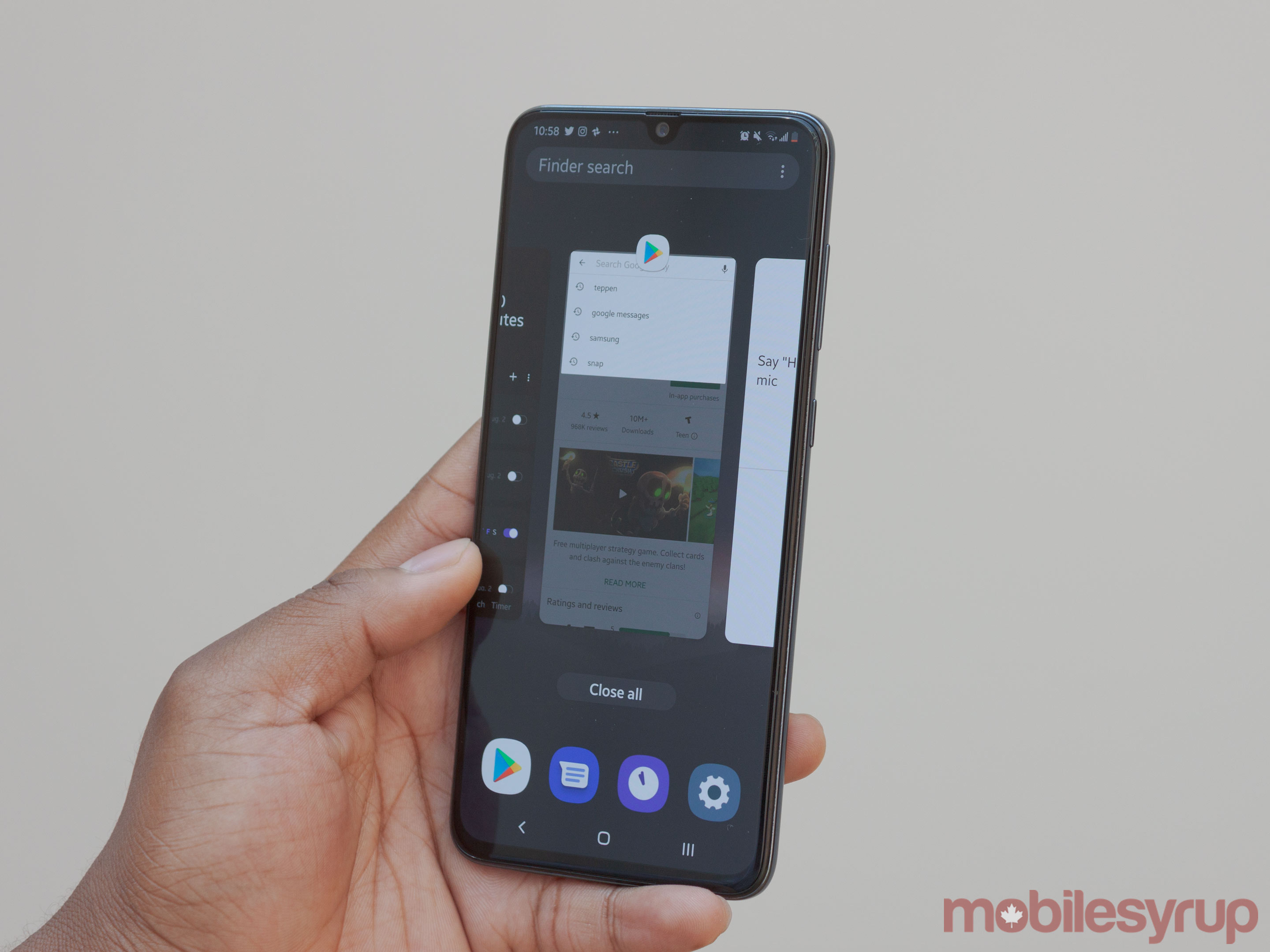
While the A70 lacks a Snapdragon 800-series chipset, it does sport a Snapdragon 675 processor. And even with the mid-range processor, there wasn’t a task that the A70 couldn’t handle.
From playing games like Teppen and Sonic Forces to surfing the web, scrolling through Instagram, and watching movies on Netflix and Instagram, I haven’t had the A70 slow down on me at any point.
Sometimes, there’s a bit of a stutter when opening an app while running several programs, but clearing all opened apps solves this issue. Even with this concern, I never experienced any app restarts, which is a good sign regarding RAM performance. I was able to have more than 20 apps opened at once. With 6GB of RAM, the phone was able to support that many apps without force closing them due to lack of memory.
The device features One UI with Android 9 Pie out of the box. One UI isn’t as cumbersome as Samsung’s old TouchWiz and offers a more streamlined experience. While it’s still not stock Android, I enjoy One UI quite a bit.
One UI includes functionality like ‘Natural Interactions,’ a feature that is most evident in the company’s ‘Messages’ app. When a user opens the app, the title ‘Messages’ appears in the top half with the bottom portion featuring the user’s text messages. The first message is halfway down the screen, making it easier to access, which is very useful with the phone’s massive screen.
It does bother me, however, that some of the features included in stock Samsung devices aren’t available on this handset.
For example, the phone doesn’t have Edge Lighting or an Edge Panel. These are two features that use the edge of Samsung’s flagship curved displays. Edge Lighting lights up the edge of a handset, whenever the user receives a notification. Edge Panel, on the other hand, allows users to pull from the edge of the display to get a list of apps, favourite contacts, settings and more. While the A70 lacks an edge, so does the Samsung Galaxy S10e, which does have both of the features.
This is probably not an issue for most users, but those are functionalities that I like a lot.
The 4,500mAh battery is a champ
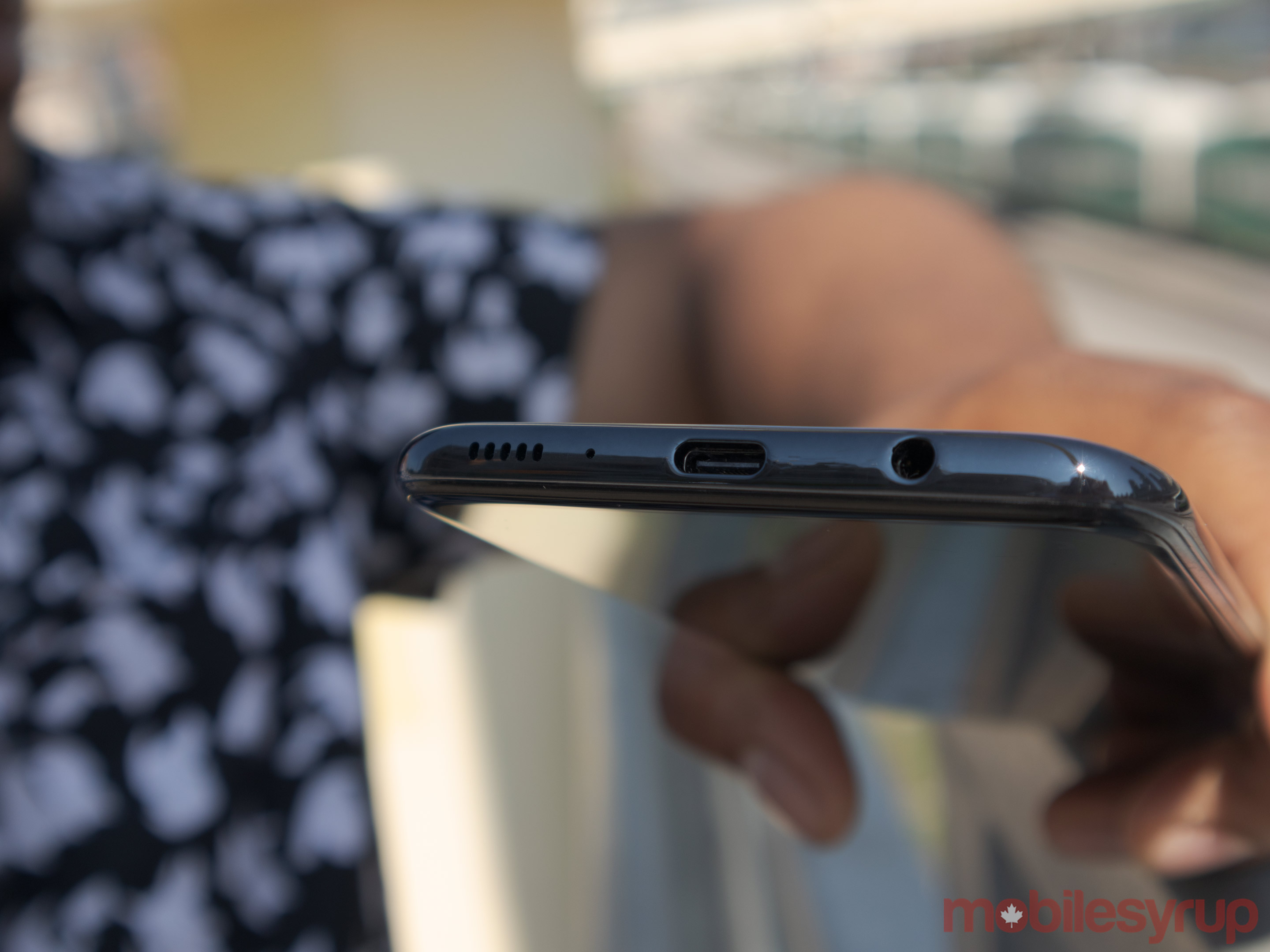
The Galaxy A70’s battery performs incredibly well. On average, the 4,500mAh battery can survive almost two days, with it dying around 6pm on the second day. I could easily get up to six hours of screentime with the handset. This includes watching videos on YouTube, browsing the web and scrolling through Instagram. At no particular time did the phone feel too hot, either.
The 4,500mAh battery in this mid-ranger is larger than the one included in the Pixel 3a XL, the Moto Z4 and Huawei’s P30 Lite. In our review of the Huawei P30 Lite, we said the phone’s battery easily “lasts a full day.” Further Z4’s battery is reportedly able to last a day and the same for the Pixel 3a.
Overall, the Galaxy A70 is a battery powerhouse.
Unimpressive Camera
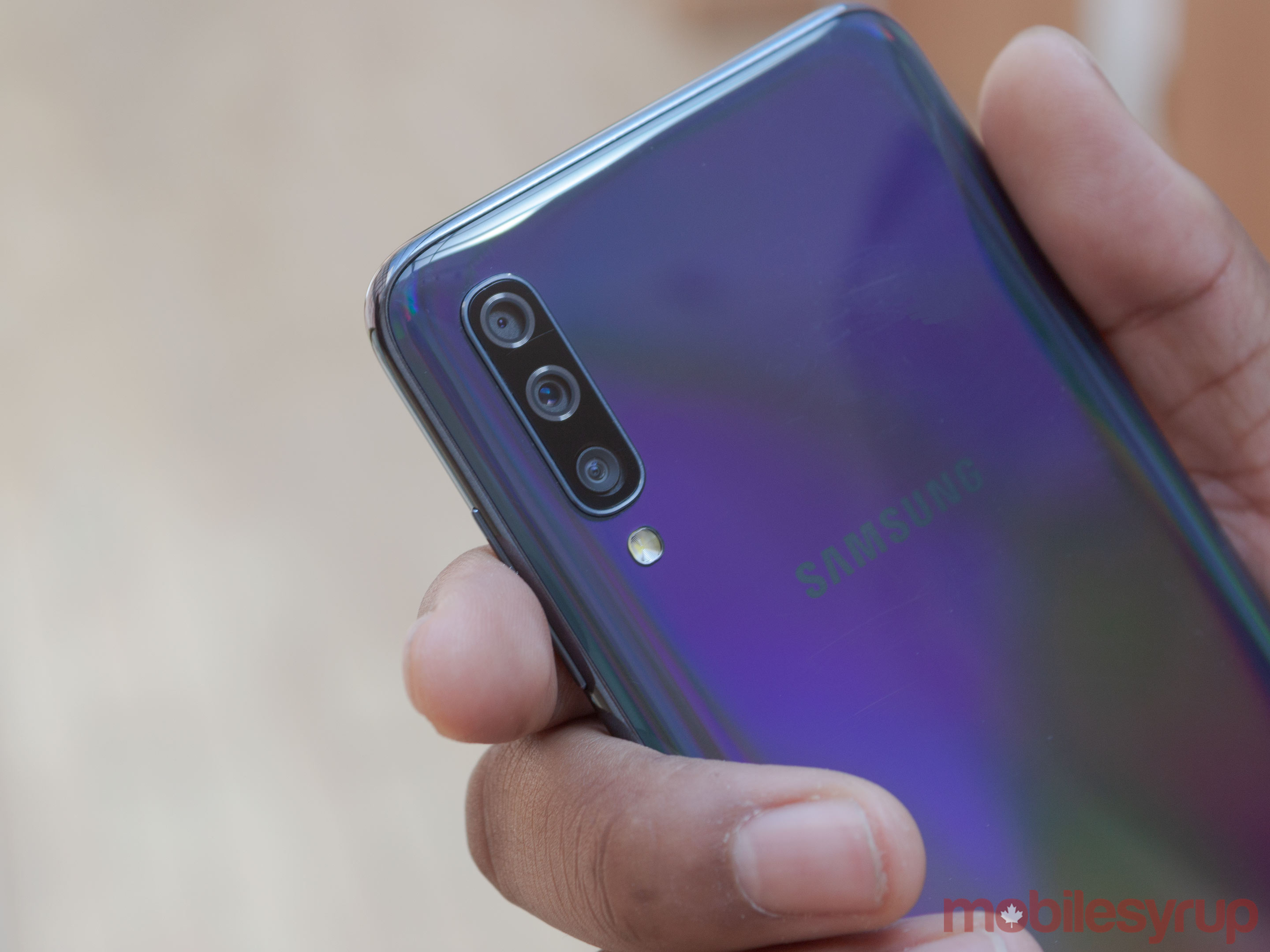
The Samsung Galaxy A70 dives when it comes to its camera, however.
The phone features 32-megapixel, 8-megapixel and 5-megapixel cameras, and all of them lack optical image stabilization. Pictures I snapped with the phone ended up overexposed and oversaturated and resulted in images of plants that appeared unnaturally green and artificial. Sunlight makes images look too bright while you can see the blue in the sky; it still seems too bright. If there’s a bright overcast sky, the picture appears far too bright, almost ruining the scene.
Pictures also lack detail and are slightly too sharp, as if the camera is trying to make up for the lack of detail by sharpening the image. Additionally, the selfie camera’s pictures are noisy, soft and overexposed.
This is a letdown as 2018’s Galaxy A8 took stellar images that were clearer and more accurate by comparison. The Pixel 3a beats the Galaxy A70’s camera, and if you’re in the market for a mid-range handset with a good shooter, I’d advise going with Google’s Pixel brand. With three cameras, I expected more from the A70.
That’s not to say these are the worst cameras featured in a phone — they just aren’t the best. And sometimes, pictures still turn out looking good, however, I expected more because of 2018’s Galaxy A8 and knowing what Samsung’s able to do with the cameras on its flagships.
Remember this is not a flagship
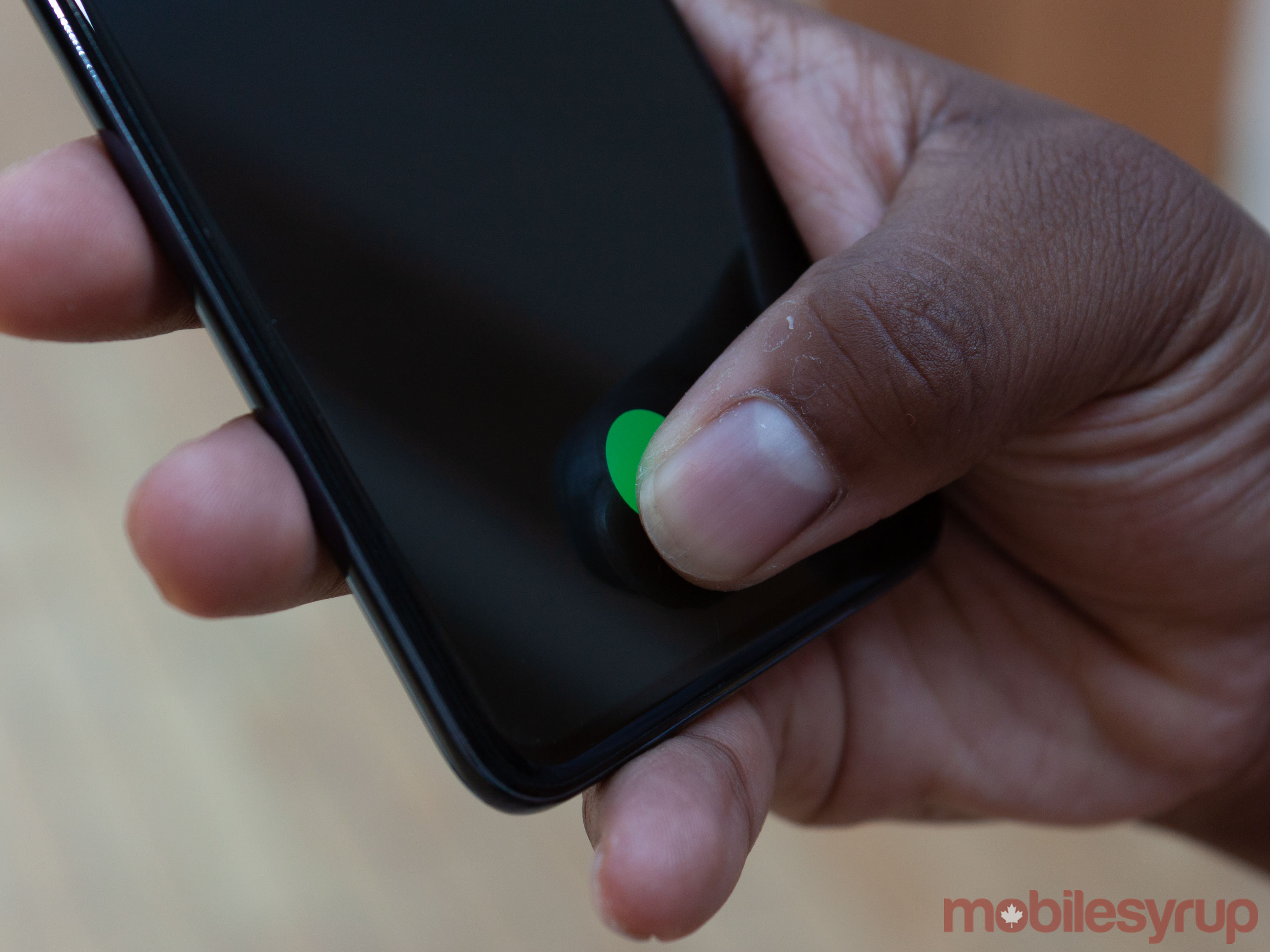
While the A70 feels and looks like a flagship, it’s important to keep in mind that it isn’t a high-end device. It features a not-so-great camera, lacks IP68 water and dust resistance and stereo speakers, and only features Corning Gorilla Glass 3.
Flagship smartphones released in 2019 frequently feature Corning Gorilla Glass 6. However, that’s quite typical for mid-range handsets. The Pixel 3a uses an Asahi Dragontail Glass and the Moto Z4 sports Gorilla Glass 3.
The Pixel 3a, Moto Z4 and Huawei P30 Lite all lack IP68 water and dust resistance and are missing wireless charging.
Photography by Jon Lamont and Bradley Bennett.
MobileSyrup may earn a commission from purchases made via our links, which helps fund the journalism we provide free on our website. These links do not influence our editorial content. Support us here.





